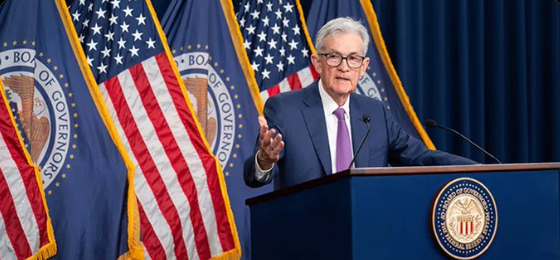We are all expecting the Fed to lower interest rates in order to help Biden at the polls. But it may never happen.
The Federal Reserve maintained its key interest rate at a range of 5.25 to 5.5 percent during its latest Federal Open Market Committee (FOMC) meeting concluded on June 12. Despite holding rates steady, Fed officials signaled the possibility of one rate cut within the year, acknowledging ongoing progress towards the central bank’s inflation target of 2 percent. The decision reflects a cautious approach amid an environment where inflation, although easing, remains higher than desired.
The Federal Reserve left interest rates unchanged with officials projecting only a single rate cut in 2024. This comes after inflation data remained unexpectedly unchanged in May. Read more https://t.co/WJs8lqWF7Z pic.twitter.com/AAeoCdzMPL
— Reuters Business (@ReutersBiz) June 12, 2024
Fed Chair Jerome Powell emphasized the current monetary policies’ restrictive nature, intended to temper economic activity and curb inflation. He noted it is still premature to determine if the policies are sufficiently stringent but expressed confidence in their effectiveness. The economic outlook, as revised in the Summary of Economic Projections, forecasts a median policy rate of 5.1 percent by the end of 2024, with expectations for a gradual decrease in the following years.
BREAKING: Fed leaves interest rates unchanged. @bcheungz has the latest. pic.twitter.com/L5NPLVQX9T
— MSNBC (@MSNBC) June 12, 2024
Economic projections also suggest modest growth with real GDP expected to maintain around 2.1 percent in 2024, slightly slowing in subsequent years. Unemployment rates are projected to rise marginally, reflecting a cautious economic tightening to manage inflation without triggering significant job losses. Inflation measures, particularly the personal consumption expenditures (PCE) price index, saw slight upward revisions, indicating persistent price pressures.
Market reactions were mixed following the Fed’s announcement. The Dow Jones Industrial Average pulled back slightly, while the Nasdaq Composite showed resilience, gaining 1.5 percent. Meanwhile, U.S. Treasury yields dipped, and the dollar index softened, reflecting investor uncertainty about the timing and impact of future rate adjustments.
🚨 BREAKING: Interest Rates Remain Unchanged After June Federal Reserve Meeting
Learn more: https://t.co/SJLT8eGfF6#FederalReserve #Fed #InterestRates #News #Finance #Crypto pic.twitter.com/Fv04Hn7e10
— iTrustCapital (@iTrustCapital) June 12, 2024
Critics and analysts have varied opinions on the Fed’s current strategy. Some argue that the central bank should remain data-dependent and avoid premature rate cuts until inflation is securely under control. Others believe that the persistent high rates are exacerbating economic pressures, suggesting a more proactive approach might be necessary to prevent further economic slowdown. Overall, the Federal Reserve appears committed to a policy of caution, balancing the need to control inflation with the risks of overly restricting economic growth.
Major Points:
- The Federal Reserve has decided to keep the key interest rate steady at 5.25 to 5.5 percent but signaled a potential rate cut later this year as progress is made towards the 2 percent inflation target.
- Fed Chair Jerome Powell described the current monetary policy as restrictive, aimed at cooling the economy to bring down inflation, yet the effectiveness and sufficiency of this approach remain under evaluation.
- Economic projections from the Fed anticipate a median policy rate of 5.1 percent by the end of 2024, with gradual reductions expected in subsequent years as inflation pressures ease.
- Following the Fed’s announcement, financial markets showed mixed reactions; the Dow Jones dropped slightly, while the Nasdaq gained 1.5 percent, and Treasury yields and the dollar index both fell.
- Analysts and market watchers express mixed views on the Fed’s strategy, with some advocating for a continued cautious approach to rate cuts to ensure inflation is under control, while others criticize the high rates for adding economic strain.
James Kravitz – Reprinted with permission of Whatfinger News



